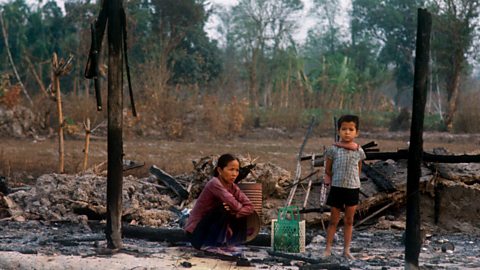Times, places, events
Some poems may refer directly to places, events and particular times in history. This information may be clear in the poem itself but if it isnвҖҷt, you could research facts about a poem to find out these details.
Poets sometimes find the subjects or themeCentral, unifying idea(s) that run through a text. of their poems from source material. For instance, Lord ByronвҖҷs poem The Destruction of Sennacherib is based on a story in the Old Testament of the Bible, and knowing this can help us understand that poem more fully, even though Byron does not mention the source in the poem itself.
Case study

Denise LevertovвҖҷs poem What Were They Like? opens with the lines вҖҳ1) Did the people of Vietnam/ use lanterns of stone?вҖҷ and goes on to ask questions about the culture of Vietnam. The second half of the poem answers these questions with references to вҖҳtheir children were killedвҖҷ and вҖҳbombs smashed those mirrorsвҖҷ, showing something terrible happened in the country.
Question
How might the following facts about Vietnam develop our understanding of this poem?
- Vietnam is a country in South East Asia with ancient cultural traditions
- conflict between the North and South of the country resulted in war that began in the 1940s and ended in 1975
- during the war it is estimated that 4 million civilians and over 1 million soldiers died
- chemical weapons such as napalm were used in the war causing horrific burns
- it took many years for Vietnam to recover from the war, but now it is a peaceful country and popular with tourists for its beauty and culture
Knowing some details about the war helps our understanding of this poem - eg if we know about napalm, the line вҖҳlaughter is bitter to the burned mouthвҖҷ is even more powerful. Also, although the war will never be forgotten, knowing the country is flourishing again may make readers feel more hopeful when reading the poem.